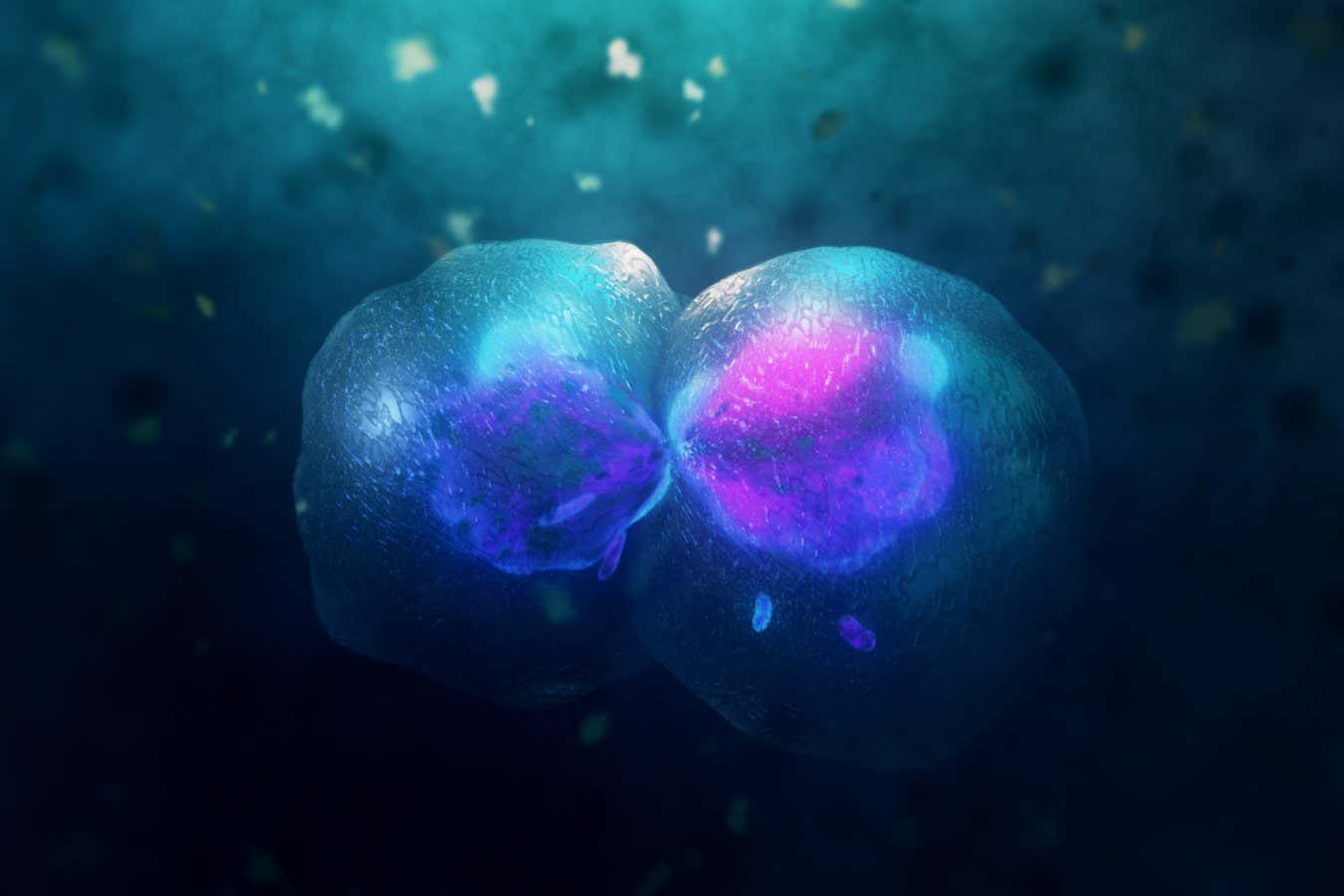A different kind of human cell division could improve our understanding of cancer and help us grow specific tissues
By Claire Ainsworth
1 May 2025
The division of human cells may not exactly align with what’s written in textbooks
Iokanan VFX Studios/Shutterstock
Scientists have discovered a kind of division that allows cells to use the information encoded in their shape to direct what kinds of cells their offspring become. This could help us develop ways of engineering tissues and deepen our understanding of how cancers spread.
Until now, scientists thought that most cells in the body become round as they prepare to divide in two. This makes it easier for them to distribute their contents equally between their “daughter” cells, resulting in two cells of the same type.
Read more
We are finally improving prostate cancer diagnoses – here's how
Advertisement
An exception to this is stem cells, which undergo an unequal, or asymmetric, cell division, which produces cells of two different types.
But Shane Herbert at the University of Manchester, UK, and his colleagues noticed that non-stem cells in the developing blood vessels of zebrafish embryos were also dividing asymmetrically. These cells, known as endothelial cells, were migrating to form new blood vessel branches and divided without rounding to create two different types.
When the team manipulated the shape of human endothelial cells in a lab dish, it confirmed that their shape before division predicted how symmetric that division was going to be. Longer, thinner cells were the most likely to divide asymmetrically, which suggests that cells can fine-tune the nature of their divisions depending on the shape they take between them.
